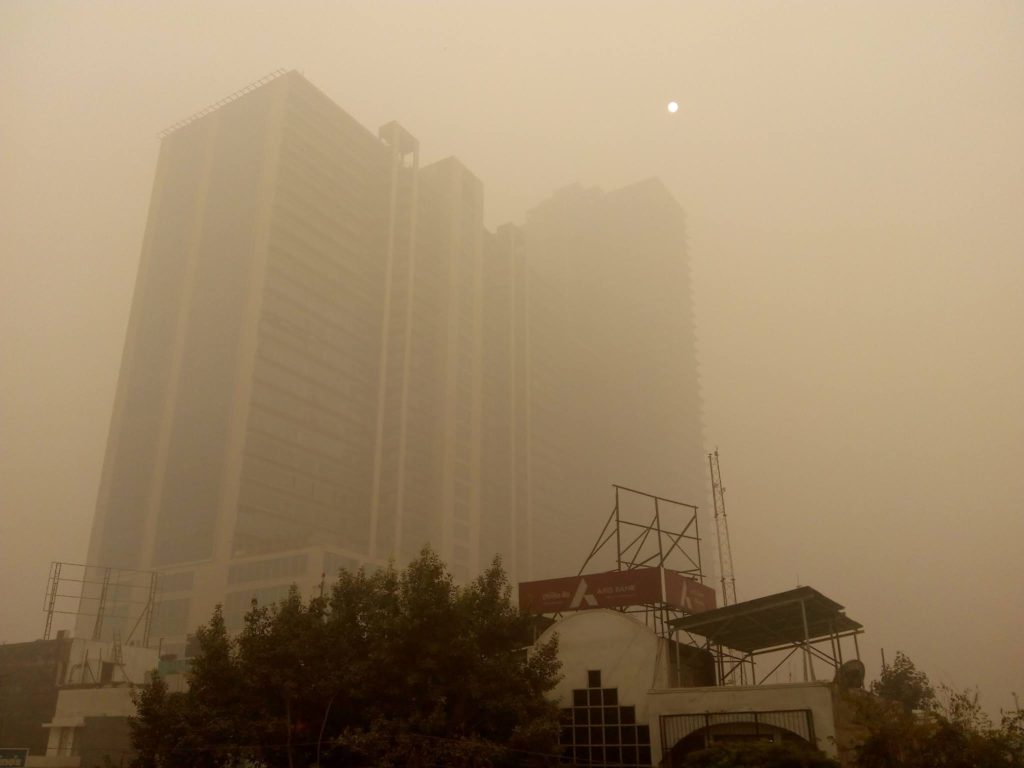For the last five days, the National Capital Region (NCR) consisting of Delhi and cities in its neighboring states has dominated media space. Deliberation on pollution is a necessary and welcome change in the media, for issues like these need their magnifying glares for action. However, there has a problem created by this Delhi-obsessed discussion over air pollution.
The brouhaha on Delhi’s pollution seems to create the perception that pollution is yet another problem being highlighted by Delhi centric media. This has led to the belief for many ordinary people that air pollution is a problem only in the big, rich cities but does not bother them. Nothing could be further from the truth though.
We Are Getting Serious About Pollution Measurement Only Now
Ours is a country that is drowning in waste and swimming in air pollution; however, this does not necessarily reflect correctly in data. Delhi is certainly well highlighted, but the reason for this is the detailed measurement and reading enabled by decades of litigation and activism on the issue in the city. Measurement is the first step towards identifying the problem. This was certainly the case with most parts of NCR, forget Delhi. Just imagine – NOIDA, an industrial hub, has only four air quality monitoring stations. This story repeats itself for Gurugram, which has often been found as per sensory and satellite data, to be even more polluted than Delhi!
As data has started to get collated, interesting patterns have started to emerge. For instance, we know that PM2.5 is the real killer. However, its measurement does not trace back to a period of ten years across most parts of India. Part of the reason was the delay in updating air quality standards, driven by evolving knowledge about dangers and health studies in the policy space. The other part has been the deliberate looking away from this aspect air pollution because ‘development comes first’.
What We Are Understanding About Air Pollution in India
Despite these constraints, we now know that there are at least 132 cities across India that do not meet the national air quality standards on any day of the year. This is based on PM10 data, which is usually inclusive of the PM2.5 data (PM10 means particulate matter of size 10 micron or less). As per CPCB definition, a city is a non-attainment city if the National Ambient Air Quality Standards (NAAQS) are being violated consecutively for five years, particularly with respect to PM10. Please note that 132 is a base number and the list itself is problematic for a variety of reasons. As an example, it is a bit of a shocker to see Gurugram missing from the list despite it being ranked one of the world’s most polluted cities on several occasions. Be that as it may, it is a starting point. It is necessary however to point out that the global rankings are not necessary a true reflection, only because pollution levels don’t get recorded for all cities to begin with.
Another thing that we do know is that Delhi is not always India’s most polluted city or geography. There are days when many other cities overtake Delhi. Patna, Kolkata, Varanasi, Ludhiana are among the cities that have worn this unwanted title over the years on different occasions. Chennai, Bengaluru, Hyderabad, Singrauli, Vijaywada, Guwahati, Chandrapur and many other important urban, tourist and industrial centres are heavily polluted as well; however, media hoopla over Delhi helps shield these stories.
Action is Possible, and Does not Need Semantics
Now, there is certainly a need to understand the sources of pollution. To this end, there are studies that undertake what is known as source apportionment. This means the identification of source of a particular pollutant following which its contribution is determined. Some major cities have been subject to it for years; others need this, and this need for a study has become a bone of contention. The absence of such studies has become an excuse to avoid acting on obvious sources of pollutants that even the National Clean Air Programme master document has laid out – industry, vehicles, unregulated biomass and waste burning, construction and dust, and others like operation of DG sets.
This is where the Graded Response Action Plan enforced for Delhi during pollution emergencies is a refreshing change. While it was a case of evidence-based decision making that is responsive, the implementation showcases the steps that need to be taken at all times of the year, not just in a crisis. What we have seen instead is visible waste of money based on pseudoscience like smog towers being touted as some great fix-all.
To this end, City Action Plans were charted out under the NCAP and under the directions of the National Green Tribunal. Enforcement however remains to be seen, as it is just being used as an advisory and not as an action plan. Unless the continued hearings result in its legal applicability, the plan would be yet another exercise in futility.
In an awkward way, the air pollution debate is not a bad thing; it is making people talk about air pollution. However, the sooner the debate widens, the better it would be for all of us.







